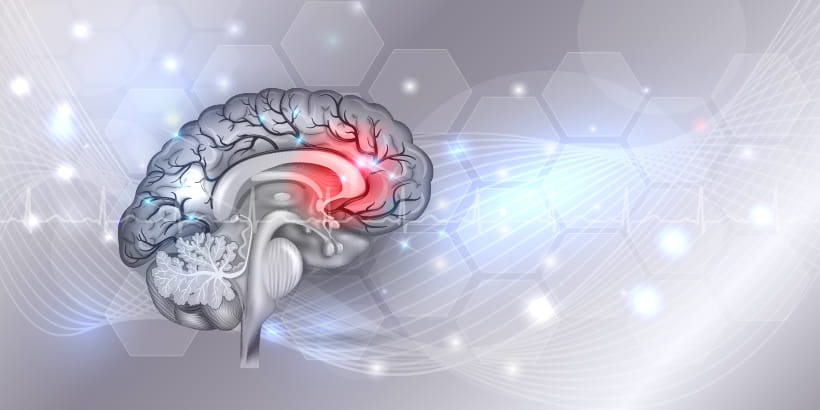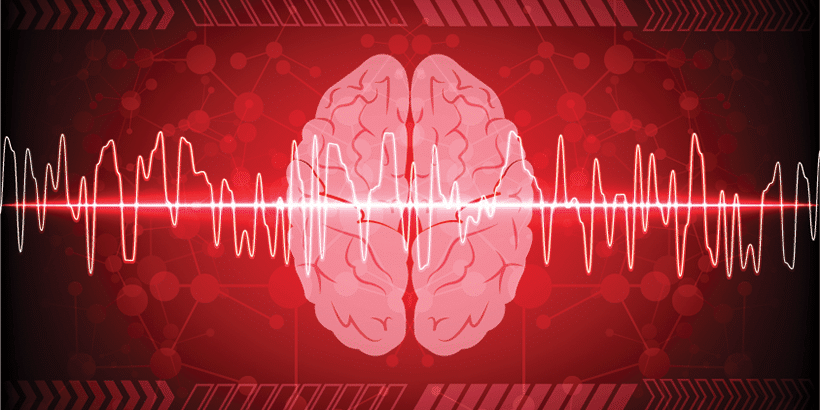Stroke Categories
 Stroke is a disease that affects the arteries leading to and within the brain and is the number five cause of death and a leading cause of disability in the United States,1 is the third most common cause of death in high-middle developed countries, and is the leading disease between the causes of years lived with disability worldwide.8 The five main categories of strokes reported by the American Stroke Association (ASA) are ischemic, hemorrhagic, transient ischemic attack (TIA), cryptogenic, and brainstem.
Stroke is a disease that affects the arteries leading to and within the brain and is the number five cause of death and a leading cause of disability in the United States,1 is the third most common cause of death in high-middle developed countries, and is the leading disease between the causes of years lived with disability worldwide.8 The five main categories of strokes reported by the American Stroke Association (ASA) are ischemic, hemorrhagic, transient ischemic attack (TIA), cryptogenic, and brainstem.
Ischemic Stroke (Embolic)
An ischemic stroke is as an episode of neurologic dysfunction caused by focal cerebral, spinal, or retinal infarction.16 Ischemic stroke accounts for 87% of all strokes.1 Ischemic stroke results in a core region of infarcted tissue surrounded by a penumbra that is electrically silent in the setting of marginal perfusion.14 Ischemia of the penumbra will progress to permanent infarction once regional cerebral blood flow decreases below a critical level for a sufficient time.4 The duration of time for which an individual’s penumbra can withstand decreased perfusion varies tremendously and depends on several factors, including health of collateral circulation.6,13 Factors that affect collateral flow and cerebral perfusion include individual vascular anatomy and modifiable elements such as blood pressure and a patient’s volume status.12,2,15
Fatty deposits lining the vessel walls, called atherosclerosis, are the main cause for ischemic stroke. Fatty deposits can cause two types of obstruction:1
- Cerebral thrombosis is a thrombus (blood clot) that develops at the fatty plaque within the blood vessel.
- Cerebral embolism is a blood clot that forms at another location in the circulatory system, usually the heart and large arteries of the upper chest and neck. Part of the blood clot breaks loose, enters the bloodstream and travels through the brain’s blood vessels until it reaches vessels too small to let it pass. A main cause of embolism is an irregular heartbeat called atrial fibrillation. It can cause clots to form in the heart, dislodge and travel to the brain.
In June 1996, the Food and Drug Administration approval of alteplase transformed the emergency assessment and treatment of patients with acute ischemic stroke.10 Thrombolysis with tissue plasminogen activator (tPA) is now a cornerstone in treating a patient with acute ischemic stroke.11,7 This treatment should be given as soon as possible, preferably within 4.5 hours after symptom onset and within 60 minutes after patient arrival at the hospital.11
Hemorrhagic Stroke
Intracerebral hemorrhage is the second most common subtype of stroke and, in comparison with ischemic stroke, mortality is higher and functional outcomes are worse.5 Hemorrhagic strokes makeup about 13 % of stroke cases and are caused by a weakened vessel that ruptures and bleeds into the surrounding brain.1 Ruptured blood vessels are weakened through either an aneurysm or AV malformation. Higher blood pressures after intracerebral hemorrhage are associated with increased fatality rates and worse functional outcomes.3 The two types of hemorrhagic strokes are intracerebral hemorrhage and subarachnoid hemorrhage.1
Current management focuses on reversal of severe coagulopathy, blood pressure control, and neurosurgical intervention for herniation or ventricular obstruction.9 Diagnosing a stroke as ischemic versus hemorrhagic before administration of a thrombolytic agent is critical to prevent worsening of the bleed.
Transient Ischemic Attack (TIA)
TIA is a temporary blockage of blood flow to the brain and since it doesn’t cause permanent damage, it is often ignored.1 Patients experiencing a TIA can exhibit the same signs and symptoms of a stroke, but they are transient and temporary. This condition should not be ignored, and follow-up with a practitioner with neurologic experience is recommended. Signs and symptoms of a TIA could be a precursor to a stroke.
Cryptogenic
According to Vidale et al., about 25% to 40% of acute cerebral ischemia have no identifiable causes and are classified as cryptogenic strokes. Cryptogenic strokes are a category of conditions in which an identifiable cause of the event is not found. Collaboration by neurologists, cardiologists, electrophysiologists and others may reveal the answers needed to provide targeted treatment for preventing recurrent strokes.1
Brain Stem
Only a half-inch in diameter, the brain stem controls all basic activities of the central nervous system: consciousness, blood pressure, breathing and all motor control throughout the body.1 Brain stem strokes can have complex symptoms, and they can be difficult to diagnose. A person may have vertigo, dizziness and severe imbalance without the hallmark of most strokes: weakness on one side of the body. A unique sign and symptom of a brain stem stroke is “locked in syndrome” which renders the victim with the ability to move only their eyes.
No matter the type and location of stroke, it is important to get the patient experiencing a stroke into a facility that can diagnose and treat promptly.
References
- American Stoke Association. https://www.strokeassociation.org/en/about-stroke.
- Aries MJ, Elting JW, De Keyser J, et al. Cerebral autoregulation in stroke: a review of transcranial Doppler studies. Stroke. 2010;41:2697-2704.
- Arima H, Heeley E, Delcourt C, et al; INTERACT2 Investigators. Optimal achieved blood pressure in acute intracerebral hemorrhage: INTERACT2. Neurology. 2015;84:464-471.
- Astrup J, Siesjo BK, Symon L. Thresholds in cerebral ischemia—the ischemic penumbra. Stroke. 1981;12:723-725.
- Charidimou A, Morotti A, Valenti R, et al. Journal Club: time trends in incidence, case fatality, and mortality of intracerebral hemorrhage. Neurology. 2016;86:e206-e209.
- Cheng-Ching E, Frontera JA, Man S, et al. Degree of collaterals and not time is the determining factor of core infarct volume within 6 hours of stroke onset. American Journal of Neuroradiology. 2015;36:1272-1276.
- Emberson J, Lees KR, Lyden P, et al. Effect of treatment delay, age, and stroke severity on the effects of intravenous thrombolysis with alteplase for acute ischaemic stroke: a meta-analysis of individual patient data from randomised trials. Lancet. 2014;384:1929-1935.
- Global Burden of Disease 2016 Causes of Death Collaborators. Global, regional, and national age-sex specific mortality for 264 causes of death, 1980-2016: a systematic analysis for the Global Burden of Disease Study 2016. Lancet. 2017;390(10100):1151-210.
- Hemphill JC, Greenberg SM, Anderson CS, et al. Guidelines for the management of spontaneous intracerebral hemorrhage: a guideline for healthcare professionals from the American Heart Association/American Stroke Association. Stroke. 2015;46:2032-2060.
- Jauch EC, Holmstedt CA. Fast protocol for treating acute ischemic stroke by emergency physicians: What took so long? American College of Emergency Physicians. 2018;73(2):113-115.
- Jauch EC, Saver JL, Adams HP Jr, et al. Guidelines for the early management of patients with acute ischemic stroke: a guideline for healthcare professionals from the American Heart Association/American Stroke Association. Stroke. 2013;44:870-947.
- Man S, Aoki J, Hussain MS, et al. Predictors of infarct growth after endovascular therapy for acute ischemic stroke. Journal of Stroke Cerebrovascular Diseases. 2015;24:401-407.
- Menon BK, Qazi E, Nambiar V, et al. Differential effect of baseline computed tomographic angiography collaterals on clinical outcome in patients enrolled in the Interventional Management of Stroke III trial. Stroke. 2015;46:1239-1244.
- Miller JB, Merck LH, Wira CR, Meurer WJ, Schrock JW, Nomura JT, Siket MS, Madsen TE, Wright DW, Panagos PD, Lewandowski C. The advanced reperfusion era: Implications for emergency systems of ischemic stroke care. American College of Emergency Physicians. 2015;69(2):192-200.
- Ruland S, Aiyagari V. Cerebral autoregulation and blood pressure lowering. Hypertension. 2007;49:977-978.
- Sacco RL, Kasner SE, Broderick JP, et al. An updated definition of stroke for the 21st century: a statement for healthcare professionals from the American Heart Association/American Stroke Association. Stroke. 2013;44:2064-2089.
- Vidale S, Russo F, Campana C, Agostoni E. Patent foramen ovale closure versus medical therapy in cryptogenic strokes and transient ischemic attacks: A meta-analysis of randomized trials. Angiology. 2019;70(4):325-331.


